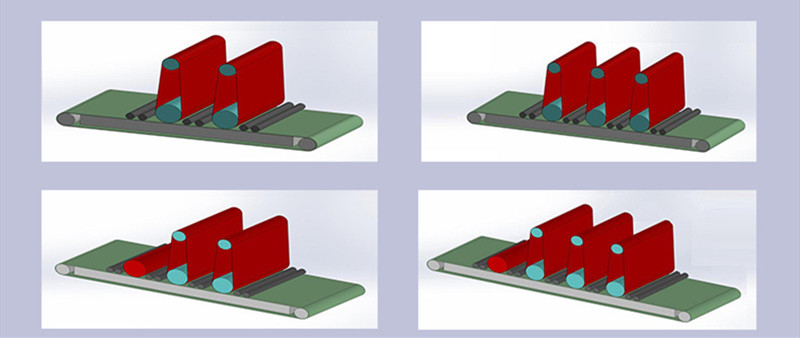Wide Belt Sanders: A Comprehensive Guide for Metal Finishing and Deburring
Introduction
In modern manufacturing, the need for precision surface treatment has become more critical than ever. Whether in metal fabrication, aerospace, automotive, or sheet metal industries, achieving a consistent surface finish is not just a cosmetic requirement—it directly impacts product performance, weldability, and downstream processing. One of the most effective solutions for this is the wide belt sander, a machine designed to handle flat surfaces at scale with uniformity, speed, and flexibility.
This article provides a detailed overview of wide belt sanders, including their design, core functions, key advantages, and specific applications in metalworking.
What is a Wide Belt Sander?
A wide belt sander is an industrial sanding machine that uses large abrasive belts to grind, deburr, or finish flat materials like metal, wood, and composites. As the name implies, the belt is significantly wider than traditional handheld or narrow-belt sanders, enabling it to cover broad surfaces in one pass.
These machines are engineered to handle heavy-duty work and high-volume production environments, and they are a staple in fabrication shops that process sheet metal, aluminum plates, or laser-cut components.
Structural Components of a Wide Belt Sander
Wide belt sanders are robustly constructed and typically consist of the following core elements:
1. Abrasive Belt System
The sanding belt is mounted on rollers and driven at high speed. The abrasive belt performs the primary cutting or finishing work. The grit size of the belt can be changed depending on whether you're removing material, deburring, or polishing.
2. Conveyor Bed
A rubberized or steel conveyor moves the workpiece steadily under the sanding heads. For small parts, a vacuum conveyor or magnetic table is used to fix the workpiece in place during operation.
3. Contact Drums and Pad
These are located behind the belt and apply downward pressure. They ensure proper contact between the belt and the surface for consistent sanding depth. Some machines use electronic sectioned pads for contour control.
4. Brush Units (Optional)
Brush heads—rotary, orbital, or planetary—are used for edge rounding, oxide layer removal, or secondary finishing after belt sanding. These are essential in deburring and R-edge forming.
5. Dust Extraction or Wet Filtration
Metal sanding creates fine particles and burrs. Machines often come with wet vacuum systems or dry dust collectors to maintain a clean, safe working environment.
6. Control Panel / HMI
Modern machines use digital touchscreen interfaces, often with programmable recipes for thickness, belt speed, pressure, and feed rate. Many high-end models also include servo-controlled auto-adjustment.
Functions and Capabilities
Wide belt sanders are highly versatile machines capable of handling various processes in a single system. Key functions include:
Deburring: Removal of sharp edges or burrs from cut metal parts.
Edge Rounding: Creating a smooth radius (up to R2) on all external and internal contours.
Oxide Layer Removal: Effective cleaning of laser oxide or heat-affected zones.
Slag Removal: Stripping dross or hardened residue from flame- or plasma-cut parts.
Surface Grinding: Flattening and smoothing for welding or coating preparation.
Brushed Finishing: Creating a uniform satin or hairline finish on stainless steel or aluminum.
Advantages of Using Wide Belt Sanders in Metalworking
✅ 1. High Precision and Repeatability
Modern wide belt sanders offer micron-level thickness control and even surface quality across the entire workpiece, which is difficult to achieve manually.
✅ 2. Increased Productivity
Thanks to automated feeding and dual or triple processing stations, these machines can finish hundreds of parts per hour, significantly cutting production time.
✅ 3. Improved Safety
Replacing manual grinding with enclosed, programmable systems reduces operator exposure to sharp edges, sparks, and fine dust.
✅ 4. Consistent Quality
By automating deburring and finishing, manufacturers can ensure every part meets tight specifications and aesthetic standards.
✅ 5. Lower Labor and Operating Costs
Though wide belt sanders require upfront investment, they reduce long-term labor costs and improve tool life due to efficient abrasive consumption.
✅ 6. Adaptable to Different Materials
From stainless steel and carbon steel to aluminum and copper, wide belt sanders can be configured to process various metals without cross-contamination.
Applications in the Metalworking Industry
In metal processing, wide belt sanders are used across several stages:
After laser, plasma, or flame cutting: To remove burrs, oxide layers, or dross.
Before welding: To clean and smooth surfaces for optimal weld adhesion.
Before painting or powder coating: To ensure uniform adhesion and surface texture.
Post-fabrication: To polish visible panels or create consistent finishes on consumer-facing parts.
They are indispensable in:
Metal fabrication shops
Laser cutting service providers
Stainless steel product manufacturing
Automotive and aerospace parts production
Sheet metal processing centers
Recent Innovations
Wide belt sanding technology is advancing rapidly. Some of the latest features include:
Servo-driven brush head compensation
Smart HMI with recipe storage
Automatic thickness sensing
AI-based wear detection and feedback loops
Wet + dry hybrid systems
These upgrades ensure greater accuracy, lower downtime, and compatibility with Industry 4.0 smart factory systems.
Conclusion
Wide belt sanders have become essential equipment in modern metalworking facilities. With the ability to deburr, grind, round edges, remove slag, and produce perfect finishes in a single pass, they represent a major leap in both efficiency and product quality. Whether you're handling high-end stainless steel parts or basic steel sheets, the right wide belt sander can transform your operation, ensuring you stay competitive in today's demanding fabrication landscape.










